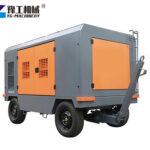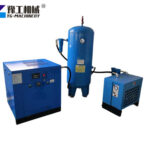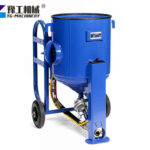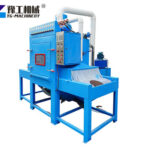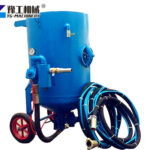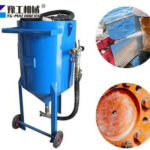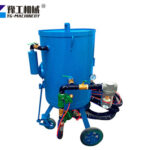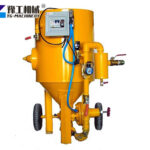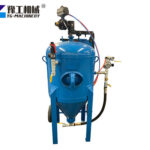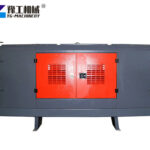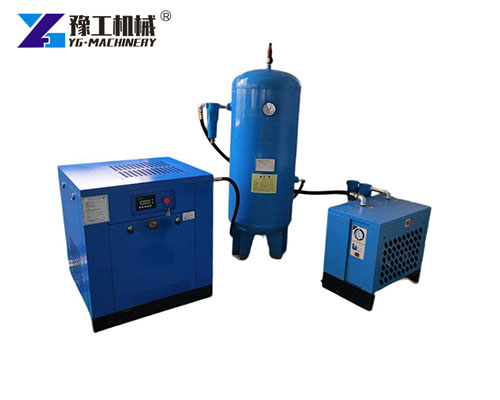

An air compressor for sandblasting is a vital piece of equipment in any abrasive blasting setup. It delivers the pressurized air needed to accelerate abrasive media against surfaces, ensuring efficient cleaning, paint removal, and rust treatment. The blasting process becomes ineffective without sufficient airflow and stable pressure, leading to poor results and wasted resources.
YG offers professional-grade air compressors built for blasting applications. These compressors deliver consistent air output, optimal pressure levels, and clean air quality for extended machine life and top-tier performance.
WhatsApp/WeChat/Phone: 86 138 3715 9132
Key Requirements for Sandblasting Air Compressor Systems
To select the right air compressor, it’s important to understand the specific requirements of your sandblasting equipment. These include airflow, pressure, air quality, and overall system stability.
- Airflow (CFM):
The compressor must provide sufficient cubic feet per minute (CFM) to meet the blasting nozzle’s demand. For example:- A 1/4″ nozzle: requires approx. 15–20 CFM at 100 PSI
- A 3/8″ nozzle: requires approx. 30–35 CFM at 100 PSI
- Operating Pressure (PSI/Bar):
Blasting equipment typically operates at 6–10 bar (90–150 PSI). The compressor must sustain this without pressure drops. - Dry Air Quality:
Moisture and oil in compressed air lead to abrasive clumping, inconsistent blasting, and damage to the surface. A good setup includes:- Moisture separators
- Oil filters
- Air dryers
- Stability:
Pressure fluctuations can severely affect sandblasting precision. A stable sandblasting air compressor ensures even abrasive flow and a consistent surface finish.
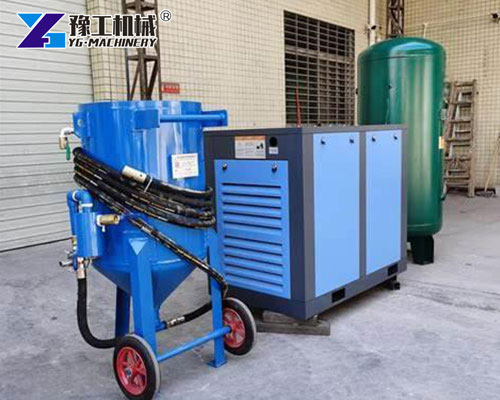
Types of Air Compressors for Sandblasting: Matching Power to Purpose
When considering the best air compressor for sandblasting, understanding the different types available is crucial. Each type offers distinct advantages and disadvantages, making them suitable for specific applications and operational demands. The choice between them often comes down to the required CFM, duty cycle, energy efficiency, and budget.
Here are the primary types of air compressors for sandblasting:
Rotary Screw Air Compressors for Sandblasting: The Workhorse for Continuous Operations
- Description: Rotary screw compressors use two intermeshing helical rotors to compress air. They are designed for continuous, heavy-duty operation and are known for their efficiency and consistent air delivery.
- Advantages:
- High CFM Output: Capable of producing large volumes of compressed air, making them ideal for high-demand sandblasting nozzles and multiple operators.
- Continuous Duty Cycle: Can run 24/7 without overheating or performance degradation, perfect for industrial applications.
- Stable Pressure: Provide a very consistent flow of air, minimizing pressure fluctuations that can affect blasting quality.
- Quieter Operation: Generally quieter than piston compressors of similar capacity.
- Longer Lifespan: Designed for longevity with proper maintenance.
- Best For: Large-scale industrial sandblasting, continuous production lines, multiple blasting pots, and operations requiring high CFM and uninterrupted air supply. If you need a Rotary screw compressor for sandblasting, you’re looking for serious power and reliability.
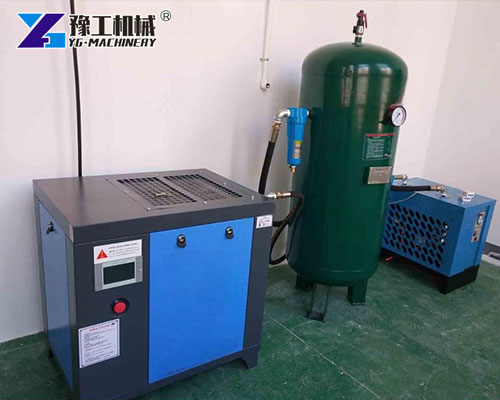
Piston Air Compressors for Sandblasting: Ideal for Smaller, Intermittent Jobs
- Description: Piston compressors use pistons within cylinders to compress air, similar to an internal combustion engine. They are common in smaller workshops and for intermittent use.
- Advantages:
- Lower Initial Cost: Generally more affordable to purchase than rotary screw compressors.
- Simpler Maintenance: Easier to service and repair for many users.
- Good for Intermittent Use: Well-suited for applications where the compressor will be turned on and off frequently, or for short blasting bursts.
- Disadvantages:
- Limited Duty Cycle: Tend to generate more heat and are not designed for continuous, heavy-duty operation (often 50-70% duty cycle).
- Lower CFM Output: Generally produce less CFM compared to screw compressors of similar power.
- Noisier Operation: Can be significantly louder than rotary screw models.
- Pulsating Airflow: Can have more pressure fluctuations compared to rotary screw compressors unless paired with a very large receiver tank.
- Best For: Small to medium-sized projects, home workshops, occasional sandblasting tasks, and situations where continuous operation is not required. Understanding the Piston vs screw compressor for sandblasting debate is key here.
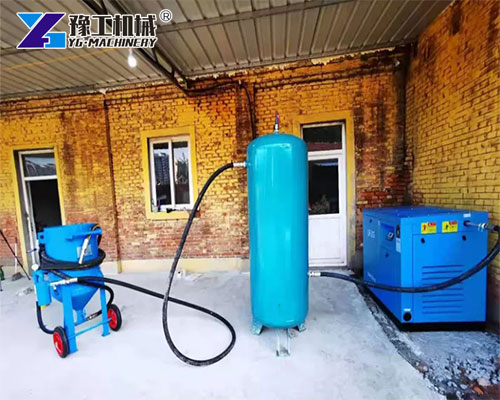
Variable Speed Drive (VSD) Air Compressors for Sandblasting: The Energy-Saving Choice
- Description: VSD compressors (available in both rotary screw and sometimes piston configurations) use an inverter to control the speed of the motor, adjusting it to match the air demand.
- Advantages:
- Significant Energy Savings: Can reduce energy consumption by 30-50% compared to fixed-speed compressors, especially in applications with fluctuating air demand.
- Precise Pressure Control: Maintains a very stable and precise pressure output, regardless of air consumption.
- Reduced Wear and Tear: Smoother operation with fewer starts and stops extends the life of components.
- Quieter Start-up: Soft start technology reduces motor strain and noise.
- Disadvantages:
- Higher Initial Cost: More expensive to purchase than fixed-speed equivalents.
- Sensitive to Dirty Environments: Electronics can be sensitive to dust and extreme temperatures.
- Best For: Operations with varying air demands, businesses focused on energy efficiency, and those seeking the quietest and most stable air supply. A VSD air compressor for blasting is a premium option for long-term savings.
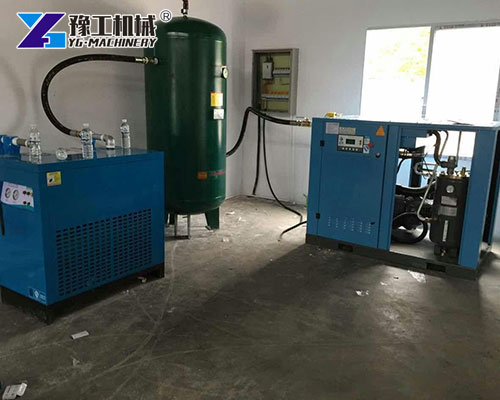
Maintenance Tips for Sandblasting Air Compressors
Proper care keeps your air compressor for sandblasting operating efficiently for years. Here’s what you should regularly do:
- Check and change air filters to maintain air purity
- Drain moisture from receiver tanks and lines
- Monitor oil levels and change compressor oil as needed
- Inspect belts, valves, and hoses for wear
- Clean the cooling system to prevent overheating
- Schedule a professional inspection annually
By following a routine maintenance schedule, you reduce downtime, avoid costly repairs, and ensure consistent performance.
Frequently Asked Questions
Q1: Can I use a regular compressor for sandblasting?
A: No. Sandblasting requires high airflow and pressure, which regular compressors can’t provide consistently.
Q2: How much CFM do I need for sandblasting?
A: Most blasting nozzles require 20–50 CFM. Always add a 25–30% buffer to account for air loss and future expansion.
Q3: Why is dry air important in sandblasting?
A: Moist air causes abrasive clogging and corrosion, reducing blasting quality and damaging equipment.
Q4: What’s the best air compressor for sandblasting?
A: The best air compressor for sandblasting offers high CFM, stable pressure, and dry air. For most professionals, a rotary screw or VSD compressor is ideal.
WhatsApp/WeChat/Phone: 86 138 3715 9132

